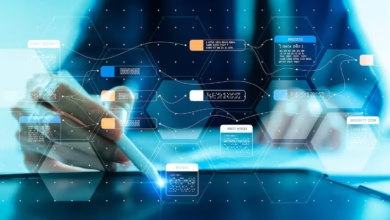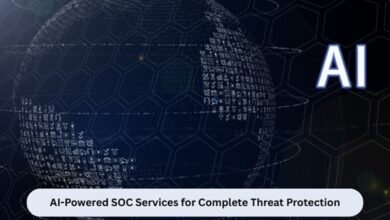Digital Transformation with Python: The Ultimate Guide

Digital transformation is currently the primary tactic for companies to attain competitiveness in 2025 and beyond. In its simplest terms, this process refers to changing business operations, customer experience, and operational patterns by applying technology for more efficiency, agility, and value. For banks, it can be about adopting AI-powered risk engines; for retailers, developing eCommerce platforms with the capability to process millions of transactions at the same time; and for healthcare providers, installing secure systems for handling critical patient data across global networks.
Among the numerous technologies driving these initiatives, Python has become the most widely used option. Its nature of adaptability, dense library set, and fast development capability make it one of the most cost-effective tools available for executing transformation strategies. Python enables organizations to automate, harness artificial intelligence, and create cloud-based applications that scale without cost waste.
But half the success is applying the right technology. Access to qualified engineers at the pace demanded by transformation projects could be challenging. Outsourcing Python software development services allows businesses to access geographically dispersed pools of expertise, reduce recruitment resistance, and accelerate delivery. Combining Python coding and digital transformation, supported by seasoned external partners, enables businesses to move quickly, reduce risk, and future-proof their operations. In this post, we’ll explore how digital transformation and Python programming intersect, investigate the business value of custom development, highlight real-world use cases, and outline practical steps for selecting the right outsourcing partner to accelerate your roadmap.
Understanding Digital Transformation in 2025 and Beyond
The meaning of the term digital transformation has changed immensely over the last decade. It started with digitizing records or building basic online platforms. Today, it surpasses AI-driven decision-making, end-to-end automation, and cloud-native infrastructure. Digital transformation in 2025 comprises the integration of advanced technologies into every layer of business operations, such that business is not only efficient but also easily adaptable to a world of constant disruption.
Market forces merely echo this trend. Artificial intelligence processes predictive analytics, personalization platforms, and fraud detection at scale. Automation has moved beyond the tedious task, facilitating smart workflows through supply chains and customer service operations. Cloud platforms are now the infrastructure of digital businesses, driving scalability, security, and global connectivity.
Python programming is the all-conquering language in this dynamic setting. High simplicity makes it accessible, and its versatility allows it to propel projects across all aspects of AI, machine learning, web development, IoT, and cloud-based solutions. For decision-makers weighing tech initiatives, Python programming and digital transformation are natural partners. Language has become the link between innovation and implementation.
Why Python is a Game-Changer for Digital Projects
The advantages of Python for commercial-scale projects are in scalability, ecosystem, and cost-effectiveness. Python applications scale gracefully using frameworks like Django and Flask, which support modular architectures and integrate seamlessly with cloud facilities.
The library ecosystem speeds up the digital efforts. For machine learning and artificial intelligence, TensorFlow, PyTorch, and Scikit-learn reign supreme. For data engineering, Pandas and NumPy are particularly strong in real-time analytics and predictive modeling. For IoT, Python enables device management, communication protocols, and edge computing integrations. Cloud-native platforms utilize Python for serverless architectures, deployment pipelines, and automation scripts.
Next, there are Python development services and their solid cost efficiency. The language’s quality finds expression in readability and clean, concise syntax that eliminates a lot of the overhead that comes with development time and maintenance. Teams accomplish more with less code, resulting in a direct impact and reduced time-to-market. For executives concerned about ROI, the coming together of speed, stability, and flexibility renders it a strategic option for any size of digital initiatives.
Key Benefits of Custom Python Web Development
Investing in customized Python web development using services from reliable companies like PLANEKS ensures solutions are tailored to the unique workflows and flexible enough to adapt to growth. Package software is often not versatile enough to work with company-specific processes, leading to gaps or inefficiencies for businesses. Python allows companies to create proprietary systems that integrate with incumbent applications, external APIs, and emerging data platforms, ensuring continuity without sacrificing innovation.
Its strength lies in flexibility. A bank may have to incorporate its existing core banking systems with a new AI-driven fraud avoidance service. Such integrations can be securely and efficiently implemented using Python. Medical practitioners can leverage custom web applications to consolidate patients’ data across facilities, all while being HIPAA or GDPR compliant.
Scalability is also important. Python frameworks allow systems to handle unexpected spikes in traffic or data levels, which is vital for businesses experiencing high growth or seasonal demand variations. By aligning technology with specific workflows, companies ensure that their digital transformation efforts address current challenges and also enable strategic growth over the long term.
Python Use Cases Driving Transformation
Python’s role in digital transformation is most evident when considering real-world applications. In e-commerce, Python allows platforms to offer personalized shopping experiences, predictive inventory management, and fraud prevention platforms. Django REST Framework-supported custom dashboards support executives to view sales, logistics, and marketing metrics in real-time.
Python, in financial technology, is increasingly being used in algorithmic trading, risk management, and regulatory compliance. Its powerful data-handling features make it the most suitable programming language to develop secure, high-performance systems that function in highly regulated environments. Global financial technology goliaths rely on Python in achieving compliance and scalability.
Healthcare facilities also leverage Python for mission-critical solutions. From predictive analytics for patient care to artificial intelligence-powered diagnostics, Python facilitates innovations that drive results directly. Hospitals and research facilities utilize Python-based applications to diagnose imaging data, track the efficacy of treatments, and manage enormous clinical datasets. These instances demonstrate the measurable ROI that Python programming and digital transformation deliver when used strategically.
Choosing the Right Python Development Partner
While Python provides the technicals, fundamental digital transformation depends heavily on the expertise of the development partner. Enterprises need to search for vendors with proven portfolios in large Python implementations. The ideal partner should not only be Python-savvy but also experienced in companion domains such as cloud migration, API integration, and machine learning deployment.
Collaboration models also play a vital part. For narrowly defined scope projects, fixed-price engagements can provide certainty, but agile, time-and-materials models can provide flexibility for emerging initiatives. Dedicated teams enable companies to scale their development capacity without incurring long-term overhead. Outsourcing partners provide access to a global talent pool, ensuring that the necessary skill sets are available when needed and at a cost aligned with transformation goals.
Steps to Start Your Python-Powered Digital Transformation
Success with digital transformation and Python programming begins with clear objectives. Executives should identify processes or systems where transformation will deliver genuinely tangible business value through cost reduction, new revenue streams, or increased customer engagement. Then, selecting a capable Python development partner ensures the technical implementation aligns with these goals. Enterprises can use Python for rapid prototyping and further modify solutions into high-performance production systems without needing to switch technology stacks.
There is a typical process that involves initial discovery workshops, where business requirements are converted into technology solutions. Prototyping enters, where assumptions are verified by the stakeholders prior to transitioning to big builds. Development follows on through agile sprints, supported by ongoing integration and automated testing. Deployment and monitoring follow, keeping the application secure, scalable, and adaptable enough to handle future needs.
Conclusion
Digital transformation represents the perfect mix of technology and expertise. Python has become the business language of choice because it can facilitate innovation via AI, automation, IoT, and cloud offerings without jeopardizing profitability or scalability. The benefits of Python programming in terms of digital transformation are apparent: faster delivery, improved flexibility, and ROI over the long haul.
For busy executives under pressure to deliver results, outsourcing provides the strategic advantage of instant access to skills on demand. Engaging with experienced Python development service providers enables firms to accelerate their transformation roadmap while reserving in-house capabilities for strategy and growth. By 2025 and further, digital transformation with Python is the key to process resilience, market competitiveness, and sustained success.



